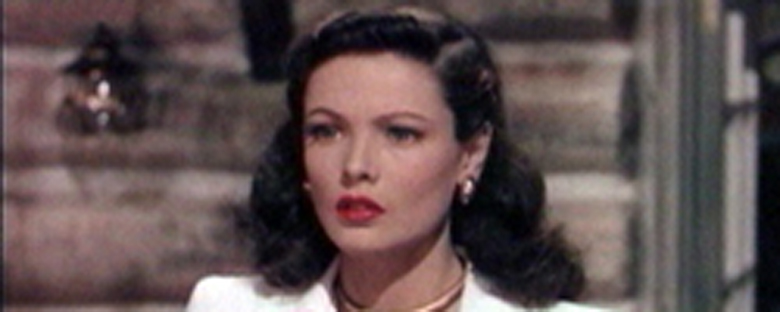Reviews
John M. Stahl
USA, 1945
Credits
Review by Matt Bailey
Posted on 20 February 2005
Source Fox Studio Classics DVD
On a train ride to a friend’s ranch in New Mexico where he is to work on his new novel, Richard Harland meets a remarkably beautiful woman who, unbeknownst to either of them, is on a journey to the same ranch. Although she is engaged to be married, Ellen Berent falls hard and fast for Richard and her feelings are returned. They marry days after. Cutting their honeymoon short to visit Danny, Richard’s crippled brother, Ellen devotes all of her time to helping Danny learn again to walk. It seems that Ellen is the perfect wife and perfect sister-in-law until she learns that Danny will be coming to live with her and Richard at their secluded cabin in Maine. Not wanting to have to share Richard’s love with anyone, Ellen begins to devise a plan to keep Danny, and anyone else who might interfere, out of the picture.
The premise and style of Leave Her to Heaven is pure melodrama, and it was directed by one of the great practitioners in the genre, John M. Stahl. Stahl, an old hand from the silent era, also directed the original versions of Imitation of Life and Magnificent Obsession, both later remade by Douglas Sirk. Yet this movie has a darker tone that feels right at home amid that other popular genre of the 1940s, film noir. There are no guns in the movie, but there is a body count, and Ellen Berent makes for one heck of a femme fatale. Furthermore, the film starts not with the meet-cute between Ellen and Richard on the train but with a flashback framing device that cues the audience into some deep personal tragedy that has befallen Richard and to the fact that he has served a couple years of prison time. From the first few moments of the picture, we suspect that there will not be a happy ending, despite the backdrop of a pristine lake in Maine.
Though the story is involving enough to make this film a classic, it is perhaps more rightly renowned for its incredible Technicolor cinematography and strikingly original set and costume design. The look of the film is difficult to describe other than to say that every blue in the film matches Gene Tierney’s eyes and every red matches her lipstick and to insist that this is not an exaggeration. This film features one of the most precisely engineered color schemes in the history of color movies and not a flower, book spine, or tchotchke in the frame clashes or distracts from the overall look. For this reason, even though it is firmly rooted in generic conventions, the film remains very much unlike any other ever made.
We don’t do comments anymore, but you may contact us here or find us on Twitter or Facebook.



